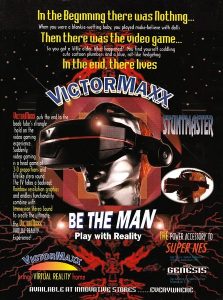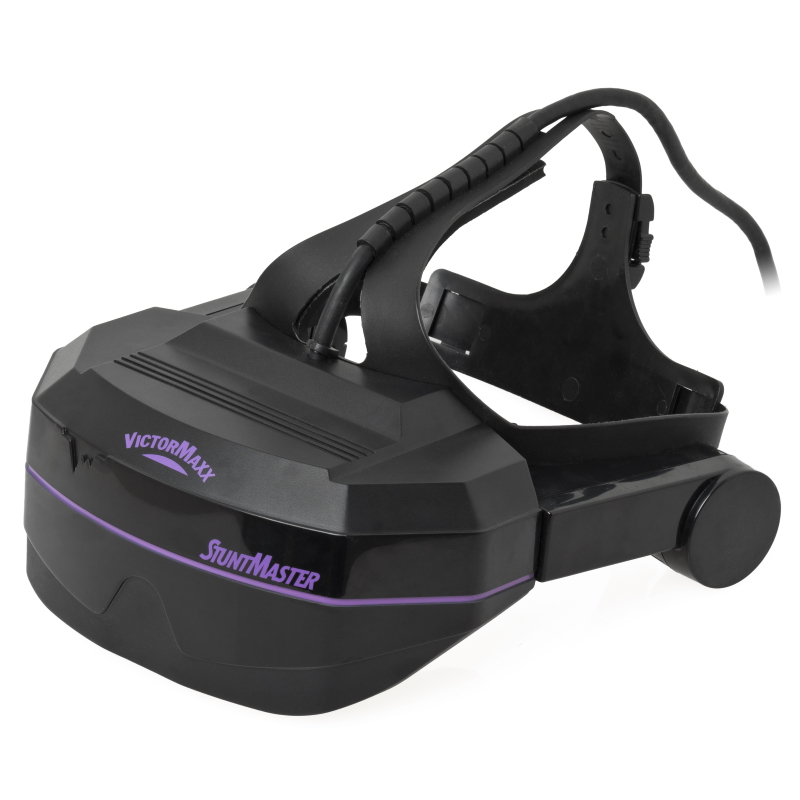|
|
|
History
At the beginning of the nineties, Virtual Reality became and hot topic. Although already present in commercial application such as flight simulation, automobile industry design and military training simulators, VR had yet to come to the consumer market. In 1991, we have seen the release of Virtuality, the first mass-produced, networked, multiplayer VR entertainment systems. Sega also announced the release of their Sega VR for the Sega Genesis/Mega Drive and the Sega arcade games. Finally, in June 1991, a team out of the Advanced Digital Systems Laboratory in the Department of Electrical and Computer Engineering at the University of Illinois founded Future Vision Technologies (FVT), a company dedicated on producing technologies related to Virtual Reality.
release of Virtuality, the first mass-produced, networked, multiplayer VR entertainment systems. Sega also announced the release of their Sega VR for the Sega Genesis/Mega Drive and the Sega arcade games. Finally, in June 1991, a team out of the Advanced Digital Systems Laboratory in the Department of Electrical and Computer Engineering at the University of Illinois founded Future Vision Technologies (FVT), a company dedicated on producing technologies related to Virtual Reality.
Future Vision Technologies then started to work on VR Head Mounted Display (HMD) that would integrate head tracking and that could connect with the Super Nintendo and the Sega Genesis/Mega Drive. In June 1993, Future Vision Technologies presented for the first time their VR headset in the Consumer Electronics Show, the same day Sega presented their Sega VR to the world. With a planned release of December 1993, the Sega VR was definitely the most anticipated VR product to be released that year, but FVT had a few aces in their sleeves. Their headset dubbed the VictorMaxx StuntMaster, was compatible with both the Super Nintendo and the Sega Genesis and with a planned release date of August, they would be the first to market. FVT had planned to follow this released with an IBM-compatible version in the first quarter of 1994. Although the StuntMaster had a monoscopic display while Virtua Sega HMD had a biscopic display , the feedback from the CES didn’t declare any clear winner when it comes to the best choice between both upcoming system. The StunMaster was even advertised to come packaged with two genesis cartridges for around the same price as the Virtua Sega HMD which was advertised to come with only one game.
Release
Released on August 20, 1993, the StuntMaster not only beat Sega to the punch, but also became the first customer grade VR headset to be released across all platforms. But right away, the systems became to be criticized. Not only the system didn’t come with any games, but the experience delivered by the system was poor at best. The system was difficult to configure and the screen resolution (280×86) was too low and would often result in a blurry image. The other problem was that Sega had just announced the Sega Genesis Model II, a cost-effective revision of the Sega flagship console which would not be compatible with the VictorMaxx. In fact, the model 2 remove the DIN port used by the VictorMaxx to connect to the Genesis.
Demise
Soon after the release of the StuntMaster FVT understood their HMD was not to the level customer was expected and abandoned the development of the IBM version to work on an upgraded version of their systems. In 1994, FTV would release the CyberMaxx, the successor to the StuntMaster.

